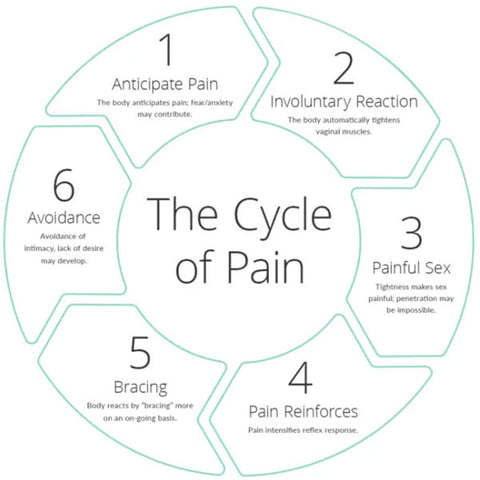Vaginismus Awareness
September hosts the Vaginismus Awareness Day and pureeros is fully in support of spreading the word to help sufferers and raise awareness about this very common female psychosexual dysfunction.

Now some of you may be thinking ‘Vagi-What?!’ I have never even heard of it? but that is exactly the problem. So many women suffer in silence, unaware that the symptoms they are experiencing even have a name and that they are not the only person in the world that feels this way.
Vaginismus is the term used to describe recurrent or persistent involuntary tightening of muscles around the vagina whenever penetration is attempted.
Which are the main symptoms?
Every woman’s experience will be individual, however the most common symptoms are:
- Involuntary tightening of the pubococcygeus muscle (PC Muscle); which makes penetration of anything from a finger, tampon, or penis difficult or impossible, and can create total closure of the vaginal opening
- Fear and anxiety about penetration due to the expectation of pain
- Women often report the fear or feeling that things ‘won’t fit’
- Attempted penetration of any kind can cause pain or soreness
This is a problem that impacts two in every one thousand women, which is also expected to be under-reported due to the feelings of shame or embarrassment that so many women feel about this dysfunction. This just should not be the case. This is a psychosomatic condition that is involuntary, the body reacts automatically to the anticipation of pain, and tenses in order to protect from the penetration that it perceives will be painful.

The issue becomes that anything that may cause pain, e.g. your partner, becomes perceived as a threat that the brain responds to. To change this and break the cycle it takes training. Think of it like putting your finger in your eye – if you poke yourself in the eye accidentally, your eye closes to protect you from the perceived potential pain, but you can train yourself to use contact lenses or eye make up – vaginismus is the same.
The Cycle of Pain
You have to work through the process of training yourself (in the way that you do to use contact lenses) to learn that all contact is not painful, and that it is possible to have vaginal penetration without being in pain.

This training uses of dilators, starting small and increasing in size to stretch the muscles and gradually gain confidence. If you think about going to the gym, you would not start with the heavier weights, you start small and build up. This same principle applies.
The vagina is a potential space, meaning that in its unstimulated state it is shaped like a flattened tube and is a not continuously open space. However the muscles have the potential to expand in order to allow a baby to pass through during childbirth, or to contract around an inserted object such as a finger.
If you are struggling with vaginismus these muscles may be tighter due to lack of use or stretching, or you may feel more tension if you are anxious; so some really simple breathing techniques can be helpful in making you feel more relaxed whilst using dilators. A good lubricant is also essential, especially when starting out, I recommend Sliquid for its excellent and natural products.
The area that is likely to most sensitive is around the entrance to the vagina where there is a much greater supply of nerve endings. This should be a comfort to those starting a dilator program as if you are using the dilators correctly there should be no pain, just the feeling of muscular tension as they are stretched as the internal walls of the vagina do not have a dense supply of nerve endings.
________________________________________________________________
You may also like: Say YES To Lubes!
________________________________________________________________
One final thing to think about when treating vaginismus is support. Thinking about what support you have, and who is there to help you through the process. It is recommended that any use of dilators is done alongside consultation from a professional or doctor, but the other option is psychosexual therapy.
This can give you the space and help to explore your feelings about what is going on, where the issue may have started, and the factors that are maintaining the cycle. Sex therapists will help you to create a personalised and combined program of working on the pelvic floor, using dilators and emotional and psychological support throughout the process.
Often you may identify points at which you need a bit more help or support, and this is normal. Like any issue that impacts health or normal functioning, it can be emotional; and a little help can go a long way.
If you want to listen to one woman’s account of one woman’s experience of vaginismus, check out the amazing Alix Fox’s podcast where she speaks to Kirsty about the trials, tribulations and triumphs of managing vaginismus.
So please share this article, and help spread awareness, so that more women don’t suffer in silence. #vaginismusawareness

